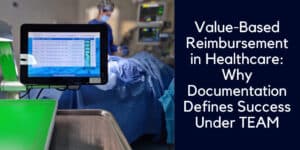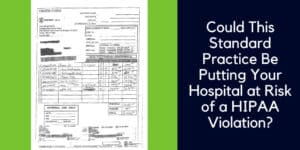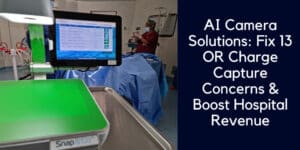What’s inside:
Surgical supply tracking is evolving! AI and computer vision have revolutionized the speed and efficiency of perioperative documentation.
Reed on to find out:
- Why OR supply tracking matters
- The evolution of surgical supply tracking technology
- POU data capture challenges
- Computer vision AI tracking technology
Do your perioperative nurses struggle with inefficient supply documentation technology every day? Failed barcode scans? Never-ended data entry? Catch-up admin after surgery?
Perioperative supply documentation technology has finally moved on and is liberating operating room nurses from the burden of supply utilization.
The evolution of point-of-use tracking has come a long way, could AI technology be your saving grace?
Why POU supply data matters
Ignore surgical supply tracking at your peril! There’s always been a need to accurately document the supplies used in surgeries and procedures.
ORs and procedural rooms are a vital data collection point that feed into patient records and facilitates efficient internal workflows, such as medical billing and inventory management.
Despite the importance of getting it right, many healthcare providers are forced to compensate for inefficient supply utilization records by putting OR documentation reconciliation procedures in place, in order to spot missing implants and data inaccuracies.
So, what went wrong? Why is point of use supply tracking so problematic?
The evolution of surgical supply tracking technology
First there were handwritten notes, then there were stickers. But manual records are error-prone, and cannot be easily referenced in the event of a product recall.
The introduction of Electronic Health Records (EHR) saw an increase in digital documentation, and various systems were used to extract supply utilization data – from keying-in data to barcode scanning and QR codes.
Despite their popularity, barcode systems, even the new 2D barcodes, haven’t solved point of use record keeping issues. They rely upon products being cross-referenced in the Item Master, so if any product is missing, or has had a GTIN update that isn’t reflected in the catalog, a system error will appear on the screen.
And what about all those off-contract or bill-only items? When these are scanned and don’t find a match in the Item catalog, again, the automated process grinds to a halt.
The truth is that system exceptions are a common event during surgeries, and result in delayed documentation, after the back-office team have caught up with the paperwork, often delaying billing. Even worse, some products end up being missed off the records altogether.
So how can providers ensure their patient records contain all the relevant data of every consumed item?
POU data capture challenges
Capturing accurate surgical supply data is far from simple and is particularly problematic when hospital systems don’t speak to each other. In some cases, where legacy systems are in place, or where new technology is unable to integrate with core systems, nurses are forced to carry out the dual, or even triple entry, of each item.
And let’s be honest about barcode scanners – they may work well on some items, but they’re also prone to missing vital data off the records, for example the batch number or expiry date – which are vital for FDA UDI compliance.
Automated supply tracking technology needs to be able to deal with every type of product and be adept at extracting full item data.
With so many data integrity issues commonplace in OR and procedure room across the world, it’s a relief that POU product tracking has once again evolved, and this time the technology’s got it right.

Computer vision AI tracking technology
New computer vision and AI technology has finally fixed surgical supply documentation.
Quick and efficient data capture
New image recognition takes a quick “snap” of the product packaging or label and extracts full digital data on the product. The system works whether there is a barcode included in the package or not.
AI Vision is making surgical supply tracking far easier for perioperative nurses.
Achieving the data collection of EVERY consumed product
The Snap&Go computer vision sensor provides an additional layer of referencing in the form of a global, cloud database, containing perpetually updated product and SKU data.
Using a cloud database to deal with Item Master exceptions expedites surgical supply tracking and documentation, and even has corrective powers! AI and machine learning algorithms compare the data captured against the most up-to-date listing for that product in the system, updating any missing or incorrect data to ensure a full and correct entry in the system.
The new generation of surgical supply documentation frees healthcare facilities from reliance on their item master, ensuring previously “problematic” items such as consignment, trunk stock, substitutes, and off-contract, can now seamlessly flow through the system.
The evolution of point of use supply documentation technology is complete!
Snap&Go AI and computer vision technology is disrupting surgical supply documentation, prompting providers to throw out their old tech and enjoy the speed and efficiency of the latest technical advancements.
Contact us to find out more about the image to data revolution.
surgical supply tracking
surgical supply tracking






